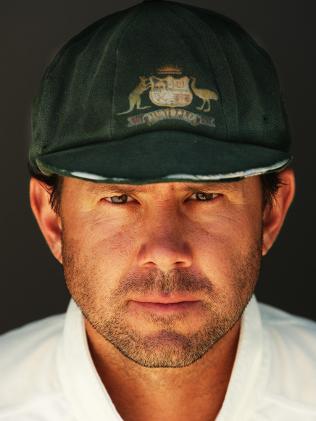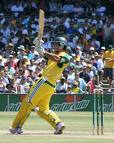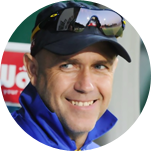 Image: Sydney Morning Herald
Image: Sydney Morning Herald
Ricky Ponting is a cricketing force of nature, a compelling figure on the cricket field, whether tearing into bowling attacks or running batters out with moments of fielding brilliance.
A two-time World Cup winning Captain, Ponting has lost the Ashes and regained them. He has weathered the loss of some of the greatest players to have played the game, rebuilding the Australian team into a tough competitive unit in Ponting’s own mould.
There is little in cricket that Ponting hasn’t seen or experienced.
At present he is second only to Sachin Tendulkar as the greatest run scorer in Test cricket history. Whether Ponting can get past the Indian master is another matter – it seems as if Tendulkar’s motivation is to claim that crown for all time.
I would suggest, though, that Ricky is giving it an almighty go to catch and get past him. The next couple of years will be fascinating: who will hang up there boots first.
The Fighter’s Early Days
There is no rhyme or reason as to where Champions should come from, Launceston in the Australian backwaters of Tasmania is as good a place as any.
Champions also don’t need silver spoons, and that is fine, because Ricky Ponting didn’t grow up with one.
He is a tough working class kid from an island that has fought for its right to sit at the high table of first class cricket in Australia.
It has now produced two of its finest batters, David Boon and Ponting.
There is nothing like the challenge of being the outsider to draw the best out of those with fighting spirit.
Mr Competitive
If there is one defining thing about Ricky Ponting, it is his incredible, competitive spirit.
He is a scrapper. Never one to back down from a confrontation on the field, he has had to learn to find better ways to deal with confrontation off it.
In growing up he has learnt to put away his instinct to stand his ground. One too many youthful indiscretions saw Ponting hauled over the coals by the Australian Cricket Board for drink-related incidents.
Ricky did his growing up and moved on.
It has not all been plain sailing for the prodigy from Tasmania, but his fighting spirit has seen him overcome competition throughout his career.
He was in and out of the Australian side in his early years as his main competitors, Damien Martyn, Justin Langer and Darren Lehmann, all fought for starting spots.
Ponting’s class has brought him through. Prodigious talent is one thing, but it has had to be steeled with endurance and goal orientation.
Ricky Ponting: Master Batsman
 As with all the great batters, and you will hear me repeat it on these pages in discussing the master batsmen, there is a stillness, the quiet mind and a simplicity to their game.
As with all the great batters, and you will hear me repeat it on these pages in discussing the master batsmen, there is a stillness, the quiet mind and a simplicity to their game.
Ponting is no different. Perhaps it is no accident that the two pre-eminent batters in world cricket, post 2000, have arguably the simplest of techniques.
Ricky’s set up in the crease is based on orthodoxy: he is classically sideways on, allowing for a pendulum-like swing of the bat.
The head still, giving the brain the best opportunity to judge the flight and length of the ball. The only movement is the tap of his bat, which creates the rhythm and tempo of the weight transfer for the stroke.
There is no initial trigger movement of the feet. Ricky Ponting’s weight is pressed forward slightly on his front foot, with the intention of going to the ball, giving him a foundation to shift his weight back again into his signature pull stroke.
Because judgement of length is the key in batting, extra movement of the head disturbs and disrupts the brain’s ability to process this visual information.
Other than the tap and release of his bat-swing, Ricky is as still as a statue.
This ability to judge length is brain-driven, it is the brain’s ability to process visual data, visual information, incredibly quickly. Other great athletes have this, such as Roger Federer in tennis and Michael Schumacher in Formula One.
Their brains can make sense of this visual information faster than just about any one else on the planet. This is what gives them a significant edge in their fields.
For the young players out there, I am sure you are asking ‘Is this learnable?
The answer is yes, see the section on adaptation and specificity in theLaws of Mental Training, and use simulation to wire it in.
From this solid base Ricky Ponting can move forward and back effortlessly, holding the sideways-on position till the brain has decided that the length is right, and he can swivel into the pull or transfer the weight back and across into a power cut.
 As with all batters, sometimes a strength can be a double-edged sword.
As with all batters, sometimes a strength can be a double-edged sword.
Ponting’s positive intent, his weight being pressed into the stroke, has at times made him push at the ball early in his innings. As he has got older and polished his game, he has done it less.
As can be seen in this photo, Ponting’s forward press takes him out and into the line of the ball.
This allows him to make excellent judgement of line and length. It has, though, got him out LBW and caught behind as his weight has gone across the line of the ball too early.
For all the great batters there is a trade off: to take the line of the ball there is risk and Ponting has been happy to accept that at times this will get him out. More often than not, it sets him up to take the initiative away from the bowler and the fielding side. The ability to adapt is critical for success: where Ricky Ponting was challenged in his game playing spin bowling, he has responded superbly.
His tendency to push at the ball and not commit to the stroke saw him battle against Harbhajan Singh and Saqlain Mushtaq.
Over time Ponting has worked on this and improved his ability to sweep and work the ball into space with better commitment to the stroke and weight transfer.
This adapatation is actually the individual making new performance maps in the brain.
The goal is to score runs against the spinners: the old maps aren’t working, so create a new one.
Work out the strategy and technical changes that need to be made and focus attention on them, then use enough repetition to wire them in.
Ricky Ponting: Mental Game
 Ricky has a great game plan , it’s not only great because it works, but also because it is so entertaining.
Ricky has a great game plan , it’s not only great because it works, but also because it is so entertaining.
The Ponting Master Plan goes like this, identify the opportunity, seize the initiative, hold the initiative.
Put the bowler and fielding Captain under pressure, keep them under pressure.
Have enough flexibility in the game plan to recognize that the opposition are also going to have periods where they are on top.
That’s fine, stay with it, then take the initiative back and put them to sword again.
Winston Churchill’s battlecry ‘ Never Surrender!’, could be replaced by Ricky Ponting’s ‘ Attack, Attack , Attack !’ such is his attitude.
Fearless, aggressive and instinctive, he is a natural warrior.
The stroke play is built around three core strokes, Cut, Pull and Drive, there is more than that, but this is the core of his game.
Ricky is quicksilver between the wickets, so with partners who run well he can get off strike easily.
Any bowler who manages to hold his length to Ponting can as easily have the pattern of his over disrupted by Ponting’s stealing a single, as he can have it broken open by a boundary.
With the spinners it was initially about taking away their length through using his feet. But that was never going to be enough at international level. Once Ponting managed to get past being hypnotised by the thought of Singh’s and Mushtaq’s mystery delivery, he has improved his sweep, paddle sweep and his weight transfer for improved ball placement.
His game is still based around orthodoxy, though. Not for him switch hitting and scoops.
Ricky Ponting: Fielding Genius
 He is one of the greatest fielders of all time, with explosive speed over 10 metres, incredible agility, brilliant hands either in the ring or at slip, and an arm that is as deadly as any that has taken aim at the stumps.
He is one of the greatest fielders of all time, with explosive speed over 10 metres, incredible agility, brilliant hands either in the ring or at slip, and an arm that is as deadly as any that has taken aim at the stumps.
In Ricky’s pomp as a fielder, the cricket world was blessed to have Ponting, Jonty Rhodes and Herschelle Gibbs all in their prime together, with only a cigarette paper between them.
He is at the time of writing aged 35, and still a force to be reckoned with.A.B.de Villiers has taken the fielding crown, but Ponting is still world class.
Strength and Conditioning
Ponting brings the full package as a cricketer, elite visual and motor skills for focus, ball tracking and body awareness, backed up by a fierce will to win … a supreme athlete !
He has speed, strength, skill and that lovely old-fashioned word we don’t hear much of nowadays, stamina.
Most of the conditioning work done by the international players when they are on the road is maintenance work. They don’t have time to put in a lot of gym work because of the travel and playing schedule.
Energy is saved for practising and playing.
Out of season the players get a chance to re-charge batteries and get some good quality conditioning in the bank, working with player-specific programs designed for individual positions.
Maintenance work on the road revolves around core strength for motion control, basic gym programs to maintain muscle tone and sprint drills for explosive speed.
Other than this, the fitness is cricket-specific: it comes from playing, cricket practice, doing the hours in the nets and the fielding drills – doing it over and over with purpose, with the highest standards.
Ponting accentuates these gifts with focus and hard work and if he has learnt anything on his cricket journey, it is to make sure he stays ahead of the pack.
He fought long and hard to get to where he is. He was never likely to take it for granted and give it away softly.
Ricky Ponting: The Australian Fighter
Go To Ricky Ponting: Rage Against The Dying Of the Light
Back To Cricket Players from Ricky Ponting
Back To Cricketlab from Ricky Ponting

About Richard Pybus
I'm Richard Pybus, I've coached Pakistan, Bangladesh, Middlesex, Titans and the Cape Cobras in South Africa and the goal of this site is to help you to play winning cricket.
